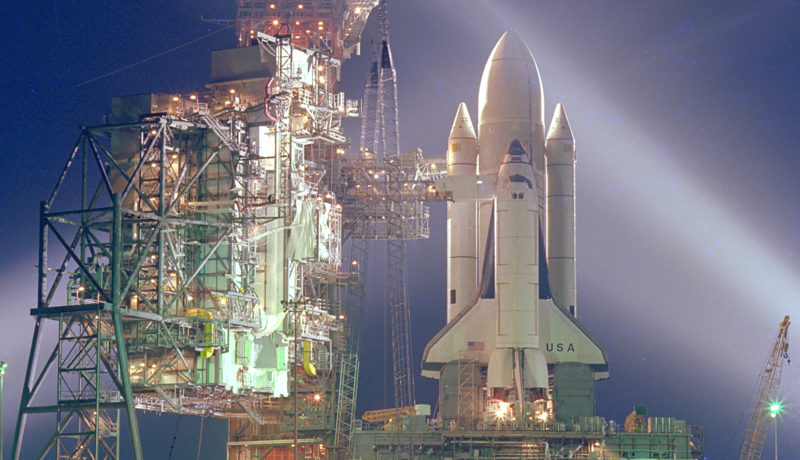In 1969, even as they were preparing to launch the Apollo mission that would put a man on the Moon, NASA engineers were already thinking ahead to the next generation of space vehicles – a re-usable spacecraft that would become known as the Space Shuttle.
Columbia was the first space-rated orbiter in NASA’s Space Shuttle fleet. Launching for the first time on April 12, 1981, this first flight was commanded by John Young, a veteran from the Gemini and Apollo programs who was the ninth person to walk on the Moon in 1972, and piloted by Robert Crippen, a rookie astronaut originally selected to fly on the military’s Manned Orbital Laboratory (MOL) spacecraft, but transferred to NASA after its cancellation.
The Shuttle’s thermal protection system had presented some of the most difficult engineering challenges during the design of the vehicle, and now, on reaching orbit and opening the payload bay doors, the astronauts were shocked to find that there were ceramic tiles missing from the rear of the spacecraft. If there were also tiles missing from the Shuttle’s belly, the craft and its crew stood no chance of surviving the heat of re-entry.

